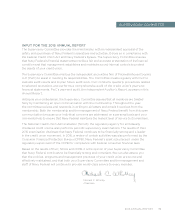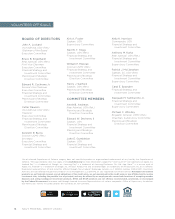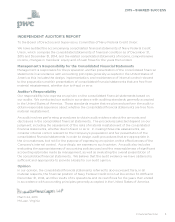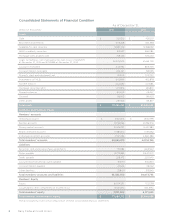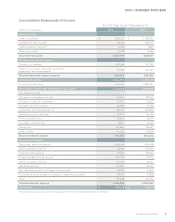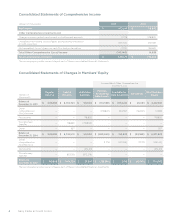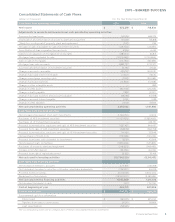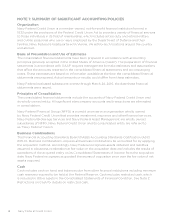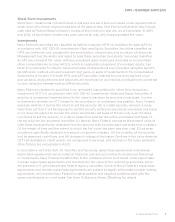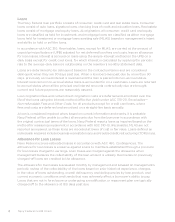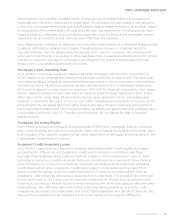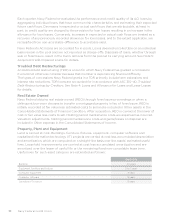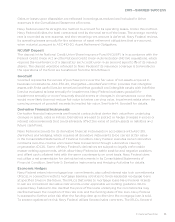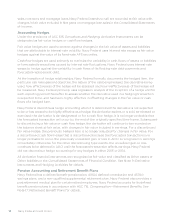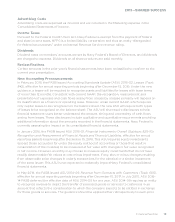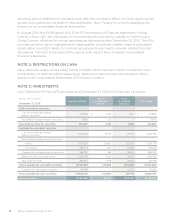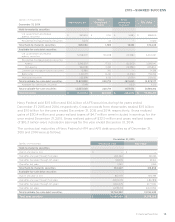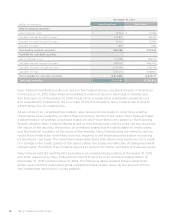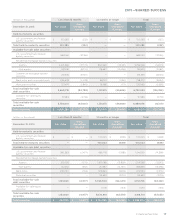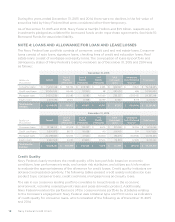Navy Federal Credit Union 2015 Annual Report Download - page 27
Download and view the complete annual report
Please find page 27 of the 2015 Navy Federal Credit Union annual report below. You can navigate through the pages in the report by either clicking on the pages listed below, or by using the keyword search tool below to find specific information within the annual report.Navy Federal Credit Union8
Loans
The Navy Federal loan portfolio consists of consumer, credit card and real estate loans. Consumer
loans consist of auto loans, signature loans, checking lines of credit and education loans. Real estate
loans consist of mortgage and equity loans. At origination, all consumer, credit card and equity
loans are classified as held for investment, and mortgage loans are classified as either mortgage
loans held for investment or mortgage loans awaiting sale (MLAS) based on management’s intent
and ability to hold or sell the loans.
In accordance with ASC 310, Receivables, loans, except for MLAS, are carried at the amount of
unpaid principal balance (UPB) adjusted for net deferred loan fees and costs, less an allowance
for loan losses. Interest is accrued on loans using the simple-interest method on the UPB on a
daily basis except for credit card loans, for which interest is calculated by applying the periodic
rate to the average daily balance outstanding on the member’s monthly statement date.
Loans are determined to be delinquent based on the contractual terms and are considered
delinquent when they are 30 days past due. When a loan becomes past due by more than 90
days, previously accrued interest is reversed and the loan is placed into non-accrual status.
Interest received on non-accrual status loans is accounted for on a cash basis. Loans are returned
to accrual status when all the principal and interest amounts contractually due are brought
current and future payments are reasonably assured.
Loan origination fees and certain direct origination costs are deferred and amortized over the
life of the loans using the interest method (eective yield) under ASC 310-20, Receivables—
Non-refundable Fees and Other Costs, for all products except for credit card loans, where
fees and costs are deferred and amortized on a straight-line basis annually.
A loan is considered impaired when, based on current information and events, it is probable
Navy Federal will be unable to collect all amounts due from the borrower in accordance with
the original contractual terms of the loans. Navy Federal reports loans as impaired based on the
method for measuring impairment in accordance with ASC 310-10, Receivables. MLAS are not
reported as impaired, as these loans are recorded at lower of cost or fair value. Loans defined as
individually impaired include business real estate loans and troubled debt restructuring (TDR) loans.
Allowance for Loan Losses
Navy Federal accrues estimated losses in accordance with ASC 450, Contingencies. The
allowance for loan losses is a reserve against Loans to members established through a provision
for loan losses charged to earnings. Loan losses are charged against the allowance when
management believes the collectability of the loan amount is unlikely. Recoveries on previously
charged-o loans are credited to the allowance.
The allowance for loan losses is evaluated monthly by management and is based on management’s
periodic review of the collectability of the loans based on prior historical experience, changes
in the value of loans outstanding, overall delinquency and delinquencies by loan product, and
current economic conditions and trends that may adversely aect a borrower’s ability to pay.
Loans that are not in foreclosure or undergoing a modification or repayment plan are typically
charged o to the allowance at 180 days past due.


